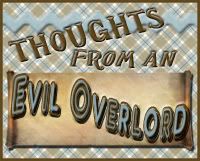I was in my favorite used bookstore earlier this year and came across the Little House on the Prairie series. I suddenly found myself overcome with a wave of childhood nostalgia, and decided to take a look. Each book was $1.00 apiece. I bought the whole series; at $9.00 total, I felt that I got a deal.
I only read a couple of the books when I was in elementary school. At the time, I found them to be, well...girly. I hated how all of the women on the prairie stayed at home to raise the kids, churn the butter, and do the baking, while the men did all of the hard labor in the fields. As a kid I thought this was very sexist. I was raised by a mother who was a self-described "tree-hugging liberal" who detested gender stereotypes. She was the first female supervisor of the northeast branch of her company, a distinction she remains proud of. But I digress.
Well, I have just finished the first four books in the series and am in the middle of the fifth one. I am very surprised that I didn't like Laura as much as I did when I was a kid. In the early books, Laura Ingalls Wilder portrays herself as a tomboy who gets into scrapes such as wading too deeply in the creek or sliding down the straw stack. I could relate to this!
I finished Little House in the Big Woods in one night and both Little House on the Prairie and Farmer Boy in one day. In Little House in the Big Woods, Mrs. Wilder does a really good job of portraying the innocence of childhood, which is appropriate, given that her character is only five years old in this story. She described her family's small log house in Wisconsin, holidays with her extended relatives, and how her Ma made the food and clothes. (That having been said, Mrs. Wilder's description of making headcheese is as unappetizing as the name of the dish itself).
Little House on the Prairie chronicled her family's first trip west, and seemed to be a how-to book on building your very own log house. The chapter that chronicled the construction of the house, as well as the accompanying illustrations, reminded me of the Lincoln Logs that my sister and I played with as kids. Mrs. Wilder made it seem so easy to gather up some logs, chop them, and build your very own cabin. The process of building the house, and making it a home, were what made this book my favorite one of the series so far.
In Farmer Boy, Mrs. Wilder wrote about the childhood of her husband, Almanzo. I am skipping my review of Farmer Boy until I get to the point in the series where Laura and Almanzo meet.
The fourth book in the series, On the Banks of Plum Creek, tells of the Ingalls' family's stay in Minnesota. At first, they lived in a sod house, then Pa Ingalls built a house of materials that were BOUGHT FROM A STORE--something that was big in those days. Ma Ingalls worried about being able to pay for all of these materials, but Pa told her not to worry; they'd pay for it all with the profits from their first wheat crop. Pa's frequent reassurance that the wheat would provide them with a better life only foreshadowed the horrible event to come--millions of grasshoppers feasted on the grain, and all of Pa's profits were gone. I feel that this book is where all childhood innocence was lost; for me, it was the first time Mrs. Wilder portrayed hardship on the prairie.
I'm in the middle of By the Shores of Silver Lake right now, where Laura and her family venture out to a railroad camp, where Pa is working now. I loved the description of Laura's first train ride--red velvet seats, men and women dressed in their finest--it made me wonder why Metro North and Amtrak couldn't at least make their seats out of a more comfortable material.
Now if you'll excuse me, I've got to chop down some trees, make Lincoln Logs out of them, and build a log cabin for myself.
Friday, June 29, 2007
Subscribe to:
Post Comments (Atom)


































No comments:
Post a Comment